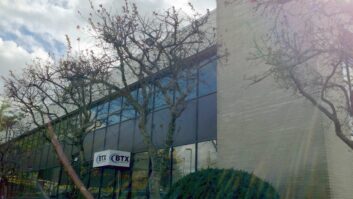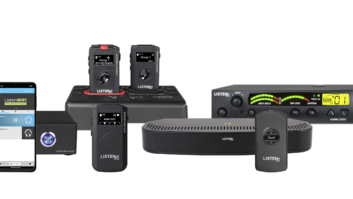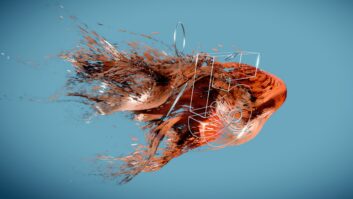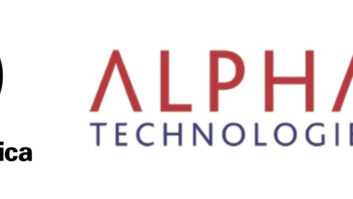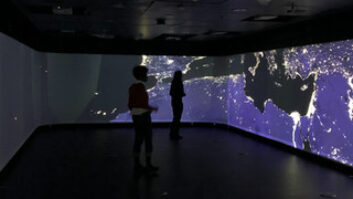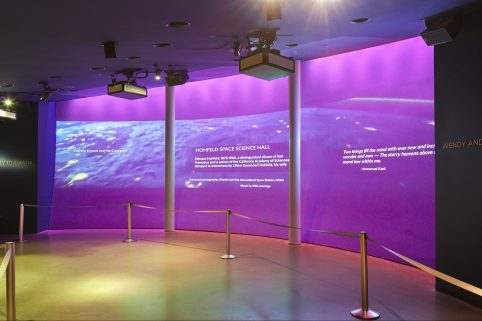
As befits a temple to science, the California Academy of Sciences uses numerous building technologies to reduce its carbon footprint: it was built using recycled steel and concrete; it recycles rainwater and draws in plentiful amounts of natural light; it has an undulating green roof, which helps to cool the building and avoids the need for air-conditioning; and the canopy around the roof contains 60,000 photovoltaic cells, which generate around 5% of its energy requirement. These all contributed to the building gaining LEED Platinum status.
Among the various exhibition halls and aquaria are two spherical spaces: the Rainforests of the World enclosure and the Morrison Planetarium. The latter recently received a video upgrade – and now features six Sony 4K projectors, whose warped and edge-blended output covers its hemispherical projection surface.
Mechdyne, the integrator for the Morrison upgrade, was also involved in the refit of Hohfeld Hall, which is used by audiences waiting to enter the planetarium. Informative content is projected onto a large wall – made complicated by the fact that there are two large columns immediately in front of it. The projection is carried out using three Digital Projection E-Vision Laser 7500 WUXGA single-chip DLP projectors, fitted with short-throw zoom lenses. (The previous version of this installation required six projectors.)
Rob Rouland, sales manager at Mechdyne, comments: “The real magic here is projecting behind those columns. And then the wall is a challenge too, because it’s part of a sphere, and we’re very low down on the sphere here. It’s a bit of an odd shape. But it came out quite well.” The warping and blending is carried out on a PC that also hosts the content, and show control is via an iPad Air 2 running Medialon Manager version 6.
World of exhibits
A multitude of other exhibits address different aspects of the natural world, including the four-storey rainforest (the lowest part of which is accessed via a glass-sided elevator which appears to take visitors under the Amazon river); numerous aquarium exhibits, both salt and freshwater (the Academy concocts its own seawater, mixing together various salts to an exact recipe); and a nod to the past in the Africa Hall, reconstructed following the earthquake, which features a penguin colony and projected dioramas of the kind that older museum visitors recall from their younger days – except that, here and there, an elephant will briefly appear and then disappear into what is otherwise a static image (to tease visitors? surely not!). In all, the Academy is home to 38,000 live animals, from the smallest fish, to the penguins, to Claude the albino alligator.
Many of the exhibits use a mixture of digital and traditional graphics. As Blair Parkin, a principal at the consultancy TEECOM, points out: “This is a living research project with field stations, and the content is going to keep changing. The digital layer gives them the ability to do that without changing the graphic panel.”
Projection mapping is used in a couple of places among the aquarium exhibits. In a central auditorium section, projections are mapped around the aquarium tanks. In fact, Parkin relates, there used to be a short show here every half-hour, but it became so popular that visitor flow ground to a halt; it was discontinued. Projection mapping is also used on the curved outside wall of the auditorium, illuminating the physical lettering of the ‘Coral Reefs of the World’ sign.
IP infrastructure
A startling fact that emerges as we tour the remainder of the Academy is that all the AV is run off an IP network infrastructure that was put in place 10 years ago. This gives the Academy’s in-house AV team a large degree of flexibility and convenience. On the audio side, for instance, “we use a Peavey MediaMatrix multi-zone building PA system,” says Dean Do, director of AV and electronics engineering. “The exhibit audio also gets sent through this system so we can route audio to whichever zones we want. We try to automate things rather than have someone go and set up a PA – we can just program it and automatically switch the input to the correct output.”
The infrastructure was carefully designed for future flexibility before the concrete was poured, adds Parkin: “So for the planetarium upgrade they didn’t need to upgrade any infrastructure – they just put equipment in the equipment room, projection in the projection gallery and control in the control booth.”
This didn’t happen by chance, though. “For two or three years, Dean was in all the design meetings. If an architect doesn’t understand the reason for something on day one, they’ll put it lower on the priority list. So getting the infrastructure for the future into the building was an amazing job – and I think it’s going to continue to serve the Academy very well.”

